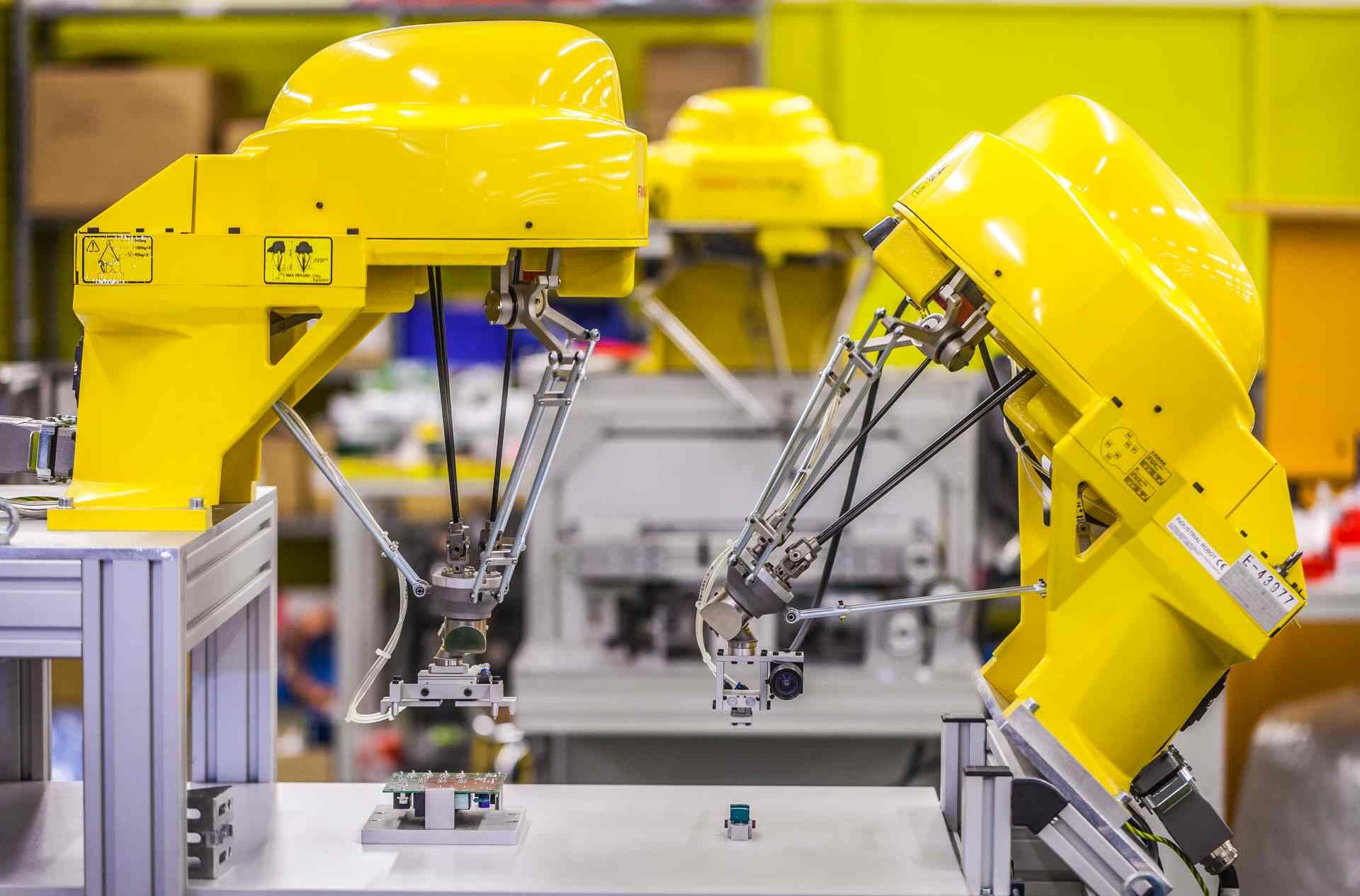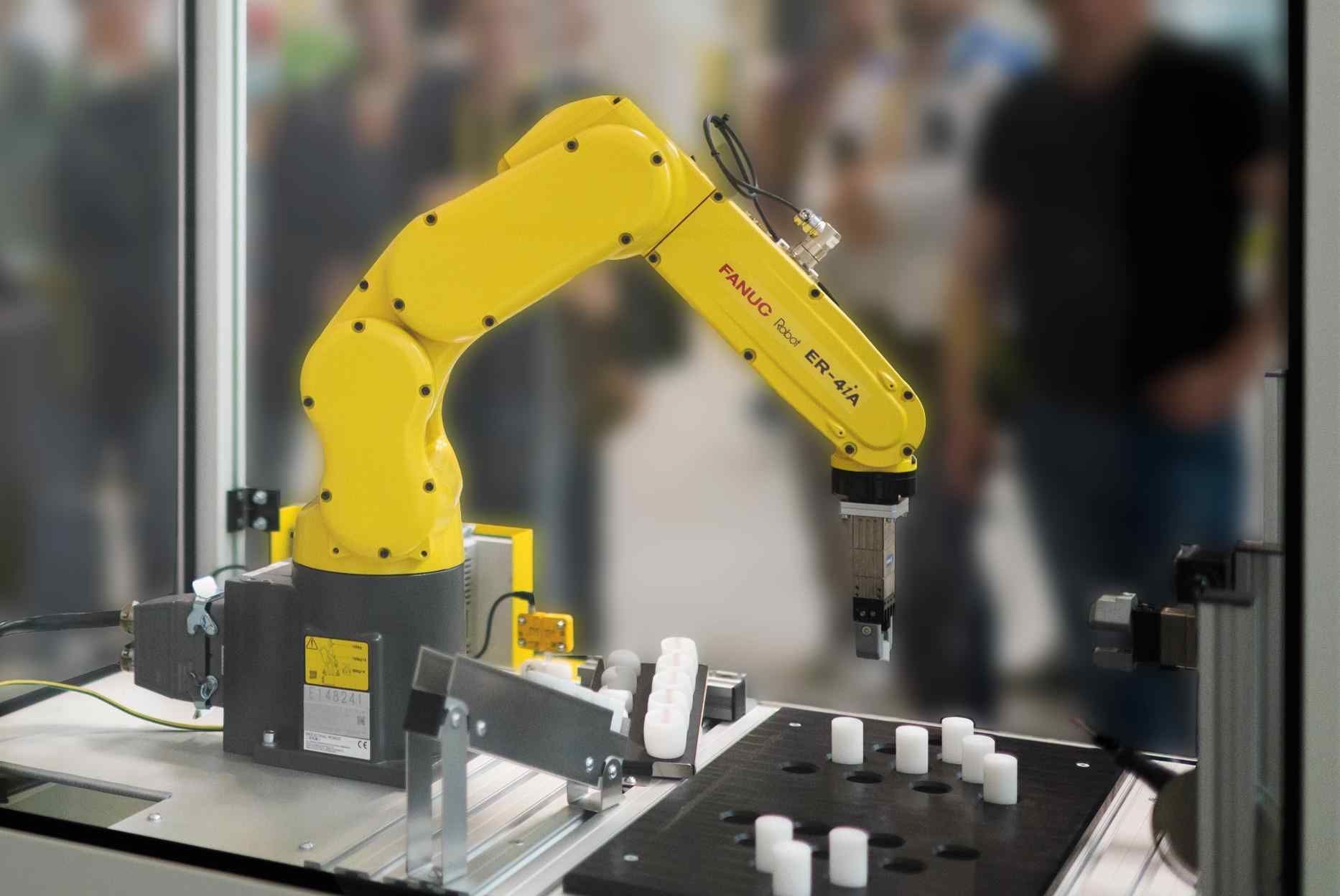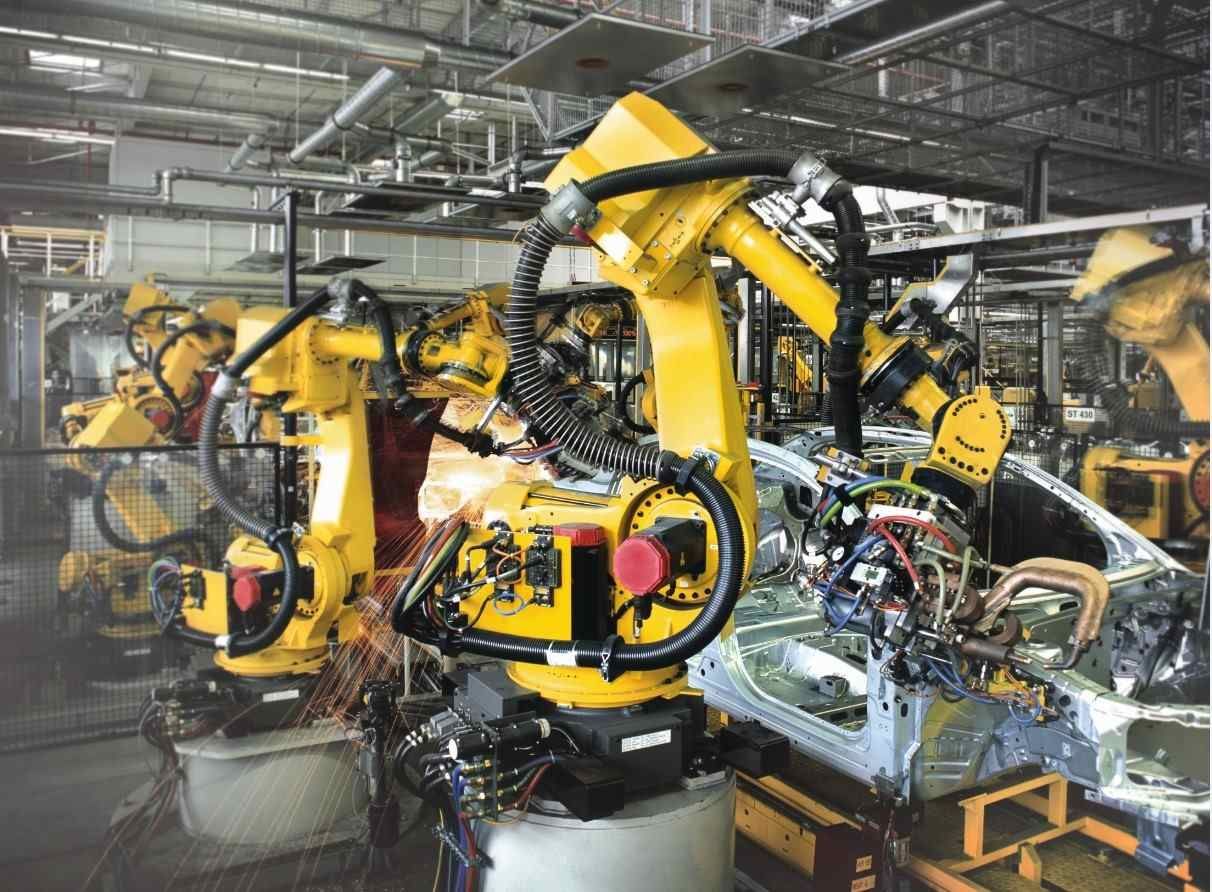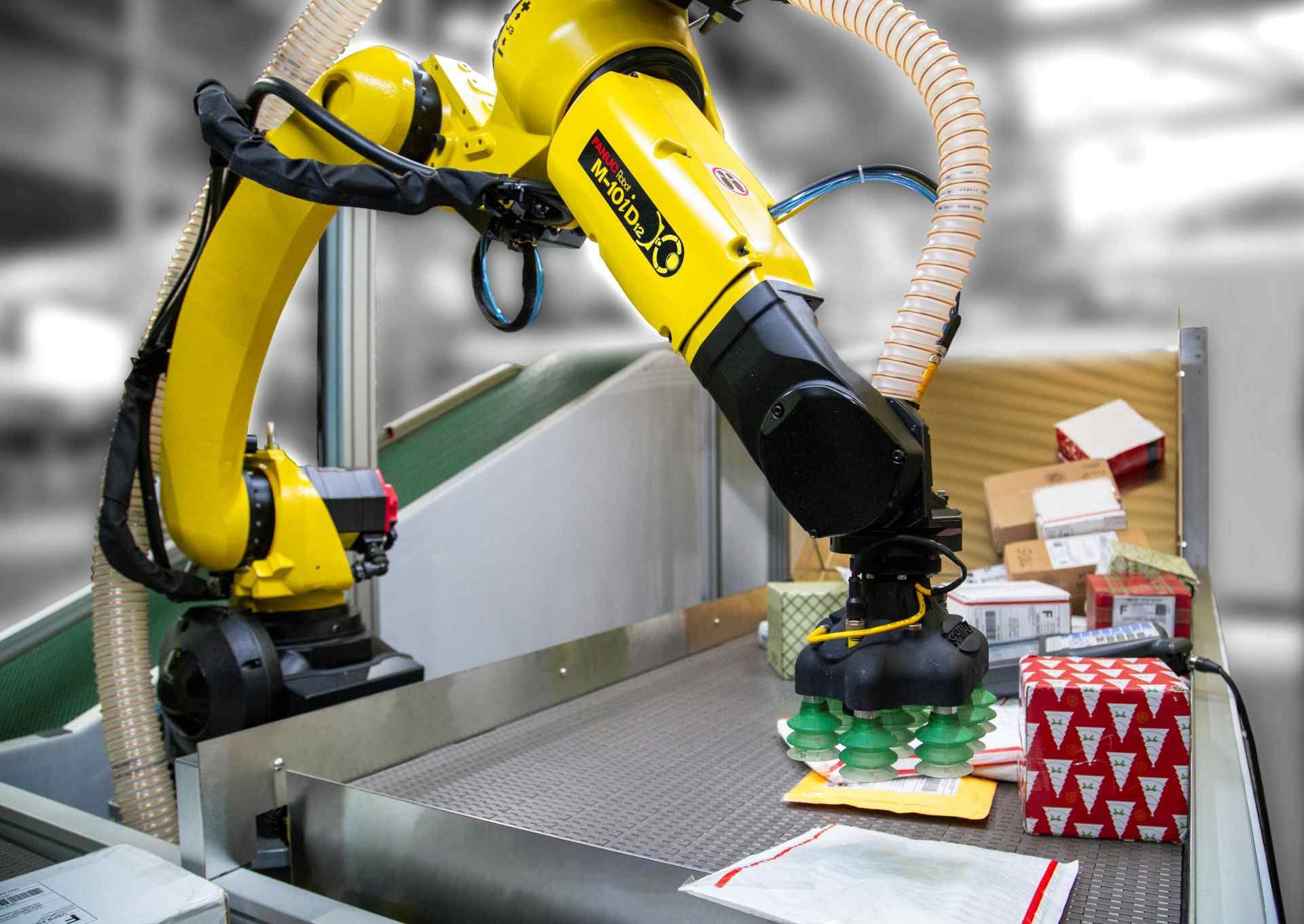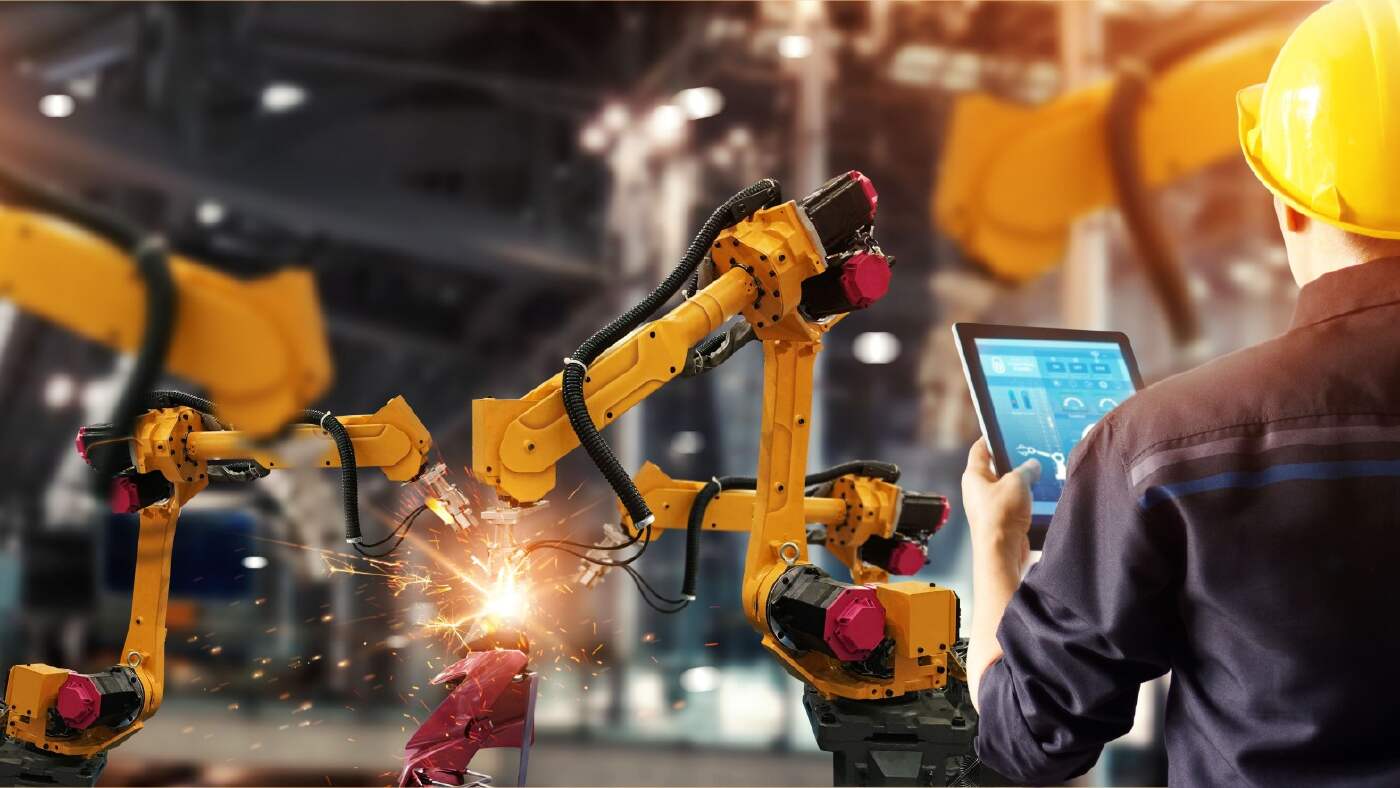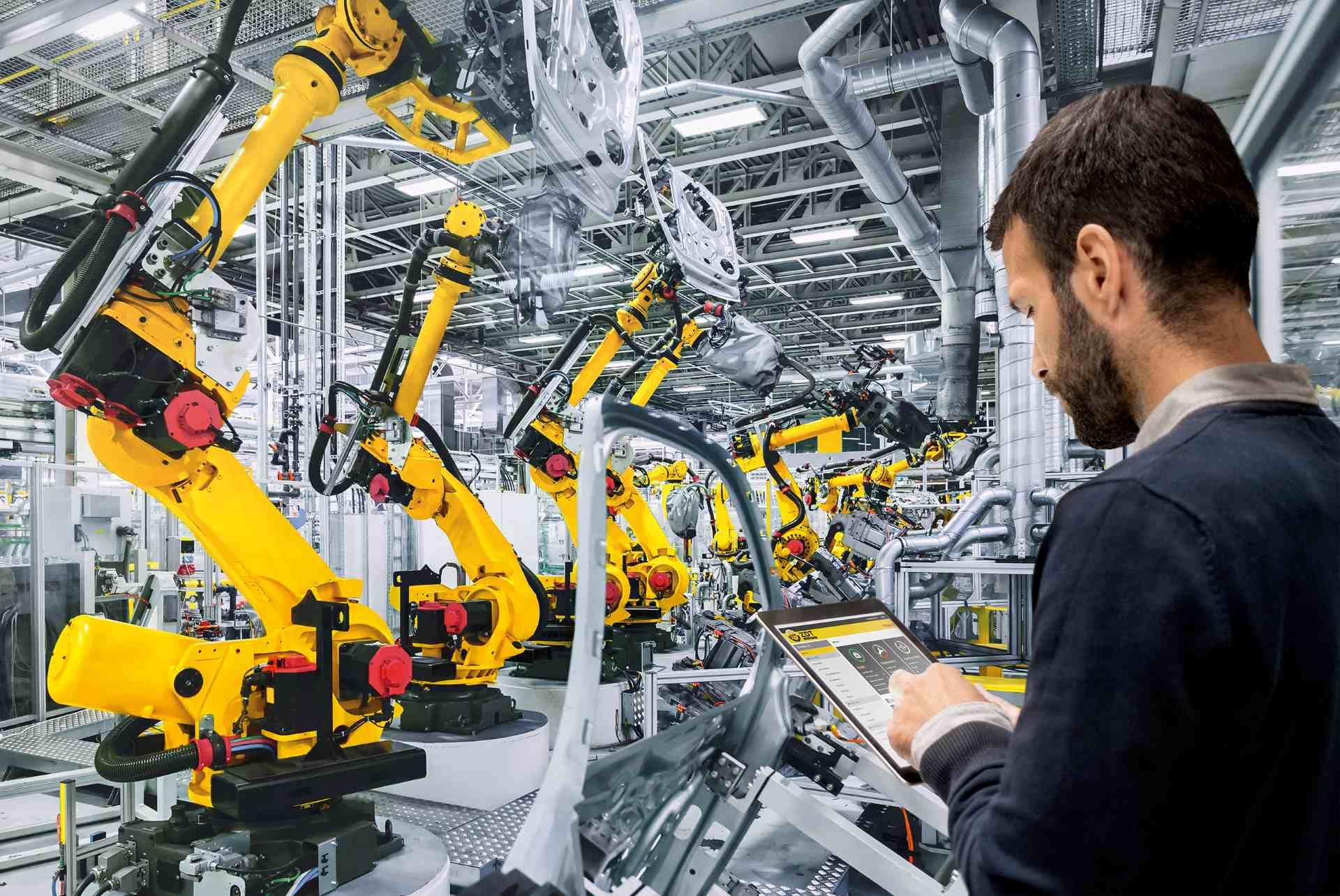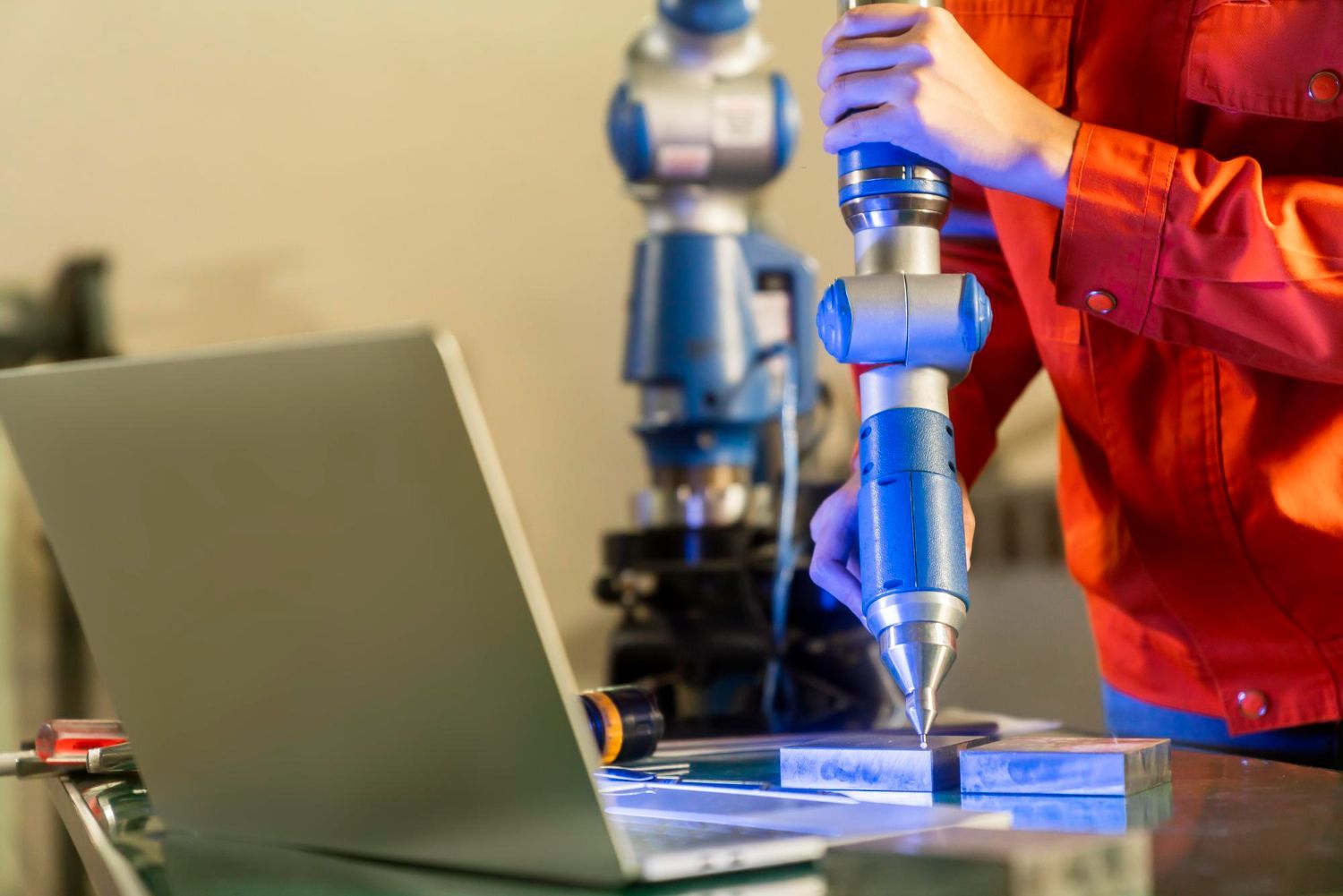Industrial Robotic Arms: An Overview
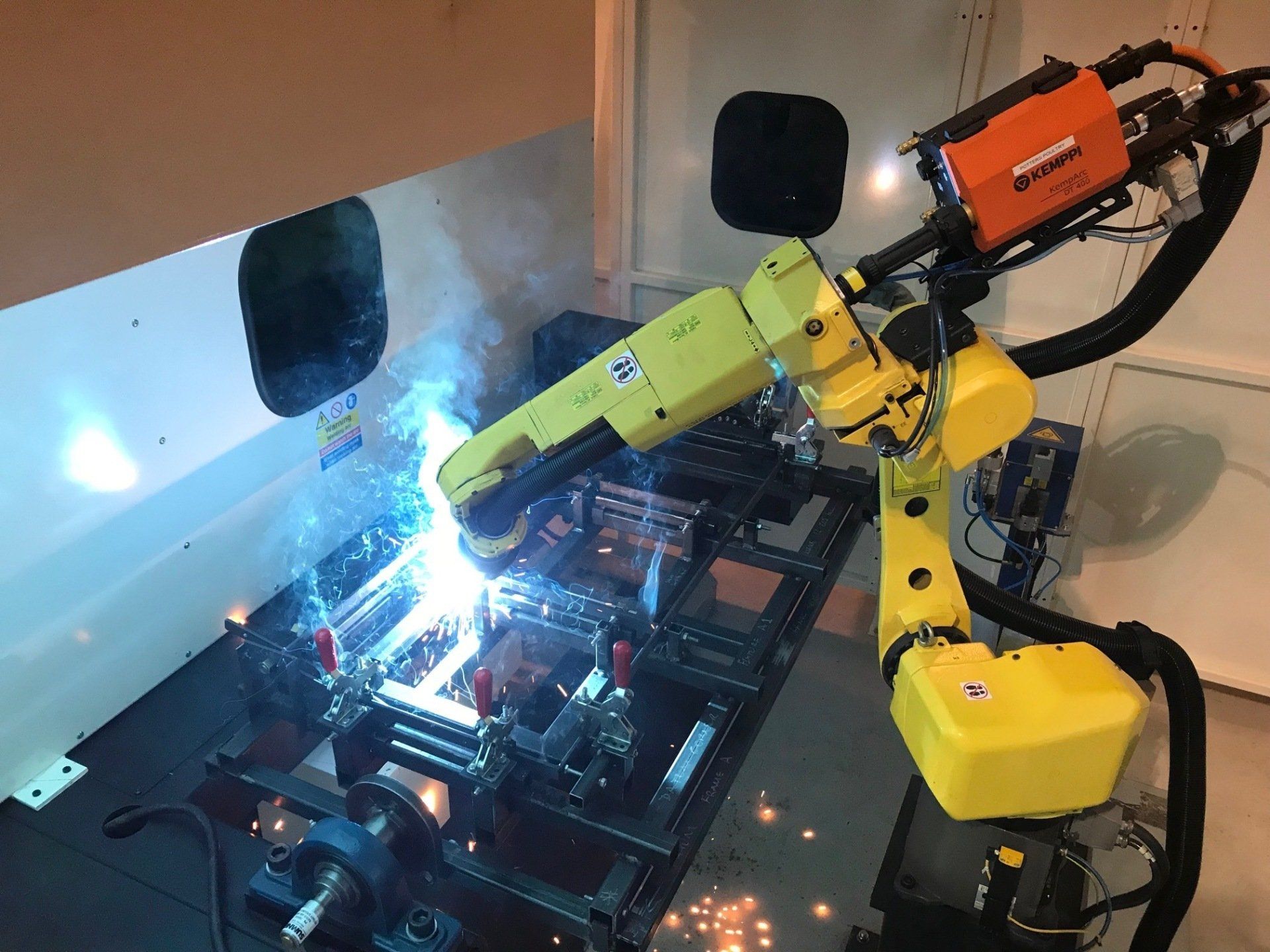
Industrial robotic arms are one of the most effective ways to automate industrial processes. Designed and programmed to assist or complete specific tasks – from manufacturing and welding to painting and palletising – robotic arms are a mainstay of the industrial world.
Industrial robotic arms have a number of advantages over traditional, manual production techniques. Not only is an industrial robotic arm an efficient and cost-effective investment, it can produce a superior product while also protecting your employees from industrial hazards.
If you’re interested in learning more about the benefits of automating your production process, the expert team at Cyber-Weld is here to provide a detailed overview of industrial robotic arms.
What Is an Industrial Robotic Arm?
An industrial robotic arm is a type of machine designed to complete industrial tasks. They’re also commonly known as ‘articulated robots’, and generally consist of a number of joints and axes that are said to resemble the movements and functions of a human arm.
An industrial robotic arm is commonly powered by some sort of motor and controlled by a computer interface. Robot arms are usually programmed to carry out what humans would consider to be repetitive or difficult tasks and, as such, they often have specialised attachments – such as nozzles or welders – in order to carry out these tasks.
There are many varied designs and types of industrial robotic arms, making them a versatile and effective way to automate a variety of industrial processes. Robotic arms can be designed to complete welding tasks, stack pallets, or paint objects. One of the most widely known uses of robotic arms is in car manufacturing, but they can be put to excellent use in any number of industries worldwide.
The main benefits of an industrial robotic arm over human labour include:
- Greater efficiency
- Greater speed
- Greater accuracy and precision
- Cost-savings
- Improved workplace safety
- Can run 24/7
Simply put, an industrial robotic arm is designed to enable industrial processes to be efficiently automated, and business owners can realise an impressive number of benefits when adopting them alongside fully integrated robotic systems.
What Is the Purpose of a Robotic Arm?
Robotic arms are highly versatile, and can be designed and utilised for a number of different purposes. As already noted, the primary purpose of a robotic arm is to automate what we generally consider to be repetitive tasks, ensuring that they’re a popular mechanical addition to production lines and manufacturing robots processes. Industrial robotic arms are also incredibly precise, so they’re perfectly suited for tasks that also require a high degree of accuracy and consistency.
Industrial robotic arms can be kitted out with a number of different tools and pieces of mechanical equipment and, as such, they can be used across many different industries. They can also be involved in different stages of production, from the design stage of products through to the manufacturing, testing, packing and inspection stages.
Their purpose is never limited to one single function, and they can be reused, re-equipped, redesigned and recycled to meet different demands throughout their lifespan.
Examples of industries that make effective use of industrial robotic arms include:
- Agriculture
- Aerospace
- Automobile
- Design
- Manufacturing
- Pharmaceuticals
- Tech and computing
Within these different industries, an industrial robotic arm may be programmed to perform a variety of different tasks. Tasks that require lots of repetition or precision are well suited to be conducted by a robotic arm, and they can be used for purposes as diverse as welding, picking, packaging, labelling and painting.
Specific tasks that an industrial robotic arm might be designed to complete include:
- Welding together metals
- Material handling tasks
- Cutting or slicing materials
- Assembling parts or components
- Picking products from conveyor belts
- Picking and packing items into boxes
- Placing labels on to boxes
- Painting products and items
- Placing boxes on to pallets
- Inspecting and testing products as part of quality control
Industrial robotic arms have a range of different functions, with their primary purpose being to automate tasks that would otherwise need to be performed manually, by humans. As well as the above purposes, industrial robotic arms have the capacity to complete many more industrial tasks that require or benefit from efficiency, accuracy, and automation. As technology continually improves, the potential scope and number of uses for robotic arms is continually growing too.
How Fast Can Robotic Arms Move?
While industrial robotic arms are in many ways designed to emulate the functions of human arms and to allow manual labour to be replaced with automated mechanics, there’s no doubt that they are much, much faster than humans could ever be.
Industrial robotic arms have the capacity to move rapidly, and they can perform mechanical tasks with exceptional speed. The exact speed of an industrial robotic arm depends on its make, model and programming, but it’s not uncommon for a robot arm to have the potential to turn 450 degrees per second, or more.
The best industrial robotic arms are not only fast but also allow for a high degree of precision, resulting in a level of accuracy that’s much higher and more consistent than manual labour could achieve. Of course, this means that industrial robotic arms can produce high-quality products and carry out precision work at speed, allowing your business to operate more efficiently and cost-effectively than it would otherwise be able to.
However, it’s also important for the speed of a robotic arm to be set appropriately in relation to the task it’s set to accomplish. Using maximum speed settings may result in a loss of precision, for example, so it’s inevitable that settings need to offer a compromise in order to achieve maximum efficiency.
How Many Types of Robotic Arms Are There?
There are a variety of different types of industrial robotic arms produced by manufacturers worldwide. While they’re all highly customisable, different designs generally follow four primary concepts, each of which is best suited to particular functions.
These four primary types of industrial robotic arms are:
Cartesian Robotic Arms
Cartesian robotic arms work on Cartesian principles, meaning their movements are based on an X, Y or Z-axis. A Cartesian robot, therefore, consists of at least three mechanical parts, and they’re commonly used to pick and pack-objects from or on to conveyor belts, or for design and production work such as 3D printing.
Cylindrical Robotic Arms
Cylindrical robotic arms work on a simple cylindrical basis, which means they can move up and down, as well as left or right. Keeping within this cylindrical shape, these robotic arms are often used for assembly and manufacturing. They are often shaped similarly to human arms and consist of several jointed sections and a particular tool, such as a welder or a drill for example.
SCARA Robotic Arms
SCARA robotic arms are commonly used for assembly tasks, as they are incredibly precise when it comes to picking and selecting components and parts. SCARA stands for Selective Compliance Assembly Robot Arm, and they work on a number of different axes, allowing for greater flexibility of movement.
Spherical Robotic Arms
Spherical robotic arms are very similar to cylindrical robotic arms, but with the useful addition of a twisting joint that allows for greater movement and control. Spherical robotic arms are used for many similar tasks as cylindrical robotic arms, including manufacturing, construction and assembly functions.
What Is the Robotic Arm in Factories Called?
The robotic arms you see in factories are generally cylindrical robotic arms or spherical robotic arms, although they may go by a number of different names, including an ‘industrial robotic arm’.
However, the term ‘robotic arm’, although in widespread use across the world, isn’t necessarily a technical term; it simply stems from the fact this robotic machine looks and acts like a human arm.
You might also see robotic arms described as ‘articulated robots’, a term used to describe a robot with two or more joints. They may also be described simply as industrial robots, although this category of machines also encompasses many more types of robots other than robotic arms.
Robotic arms may be described as mechanical arms or machine arms, while different brands and manufacturers have their own names for particular makes and models. Industry-leading manufacturers that Cyber-Weld is proud to work with include:
- FANUC Robotics
- ABB
- Motoman (A Yaskawa Company)
- Panasonic Welding and Handling Robots
How Much Does an Industrial Robotic Arm Cost
Costs can vary significantly for an industrial robotic arm, and the total cost for a particular model will depend on a number of factors. This includes the overall speed of the robotic arm, its precision and its projected lifespan, while different brands have different costs, too.
The lowest-priced robotic arms will cost several thousand pounds for a high-quality, new model. This price can go up exponentially, and the largest, high-tech models may cost tens of thousands of pounds to purchase. You also need to take into account the intended purpose of the robotic arm, as different attachments (nozzles, welders etc.) incur different costs.
If your business is looking to automate its production process, then industrial robotic arms may also be purchased in bulk or as part of a wider integrated robotic system. You’ll need to factor in other costs too, such as fitting, programming, maintenance and repairs, as well as costs to train your staff on how to use them.
Cyber-Weld offers a bespoke service that provides companies with fully integrated robotic solutions. We design and fit robotic systems that meet your needs, and we provide expert repair, maintenance and training support once the systems are installed.
Why Are Robotic Arms So Expensive?
Industrial robotic arms have a high price tag attached to them, but there are several key reasons for their cost.
It’s important to remember that these are high-tech machines that require accuracy, precision, skill and expertise in order to be manufactured, programmed and installed. The best robotic arms might be expensive, but they are also reliable and versatile and, ultimately, they stand to save your business money by reducing overheads, reducing waste, improving the consistent quality of your products, and improving efficiency.
If your business is hoping to reduce its expenditure, Cyber-Weld also provides a comprehensive range of used industrial robotic arms and other robot systems. Our engineering teams have the capacity to repurpose and refurbish old robotic systems, resulting in significant cost savings.
How Are Robotic Arms Used in Industry?
With so many potential variations and designs, robotic arms are put to excellent use in industry. As technology improves, robotic arms are finding increasingly diverse uses, too. The most popular uses of industrial robotic arms include:
Welding
Welding requires great precision and accuracy, and it’s perfectly suited to automation through robotic integration. Industrial robotic arms are commonly fitted with different types of welding tools , and they can be used for TIG/TAG and MIG/MAG welding tasks.
Material Handling
An industrial robotic arm can be fitted with a range of tools that allow them to lift and move different types of materials. This material handling function is often used to move large or bulky materials that would be hazardous for employees to lift or move by hand.
Palletising
Industrial robotic arms are well suited to picking up items and palletising them. They are commonly employed in warehouses and at the end of conveyor belts to automate the process of stacking goods on pallets so they’re ready for shipping.
Contact Cyber-Weld for More Information on Industrial Robotic Arms
If you’re looking to automate your production, manufacturing or design processes with the help of an industrial robotic arm, the expert team at Cyber-Weld is here to help. Our experienced engineers are specialists in designing and building robotic systems that can be implemented across an impressive range of industries.
We provide full-service robot system packages , tailor-made to meet your industrial needs. Our friendly staff will be there at every stage of the process, from the initial concept and planning stage, right through to after-sales and continued robot servicing and support. To find out more about our bespoke services, contact the Cyber Weld team today.

